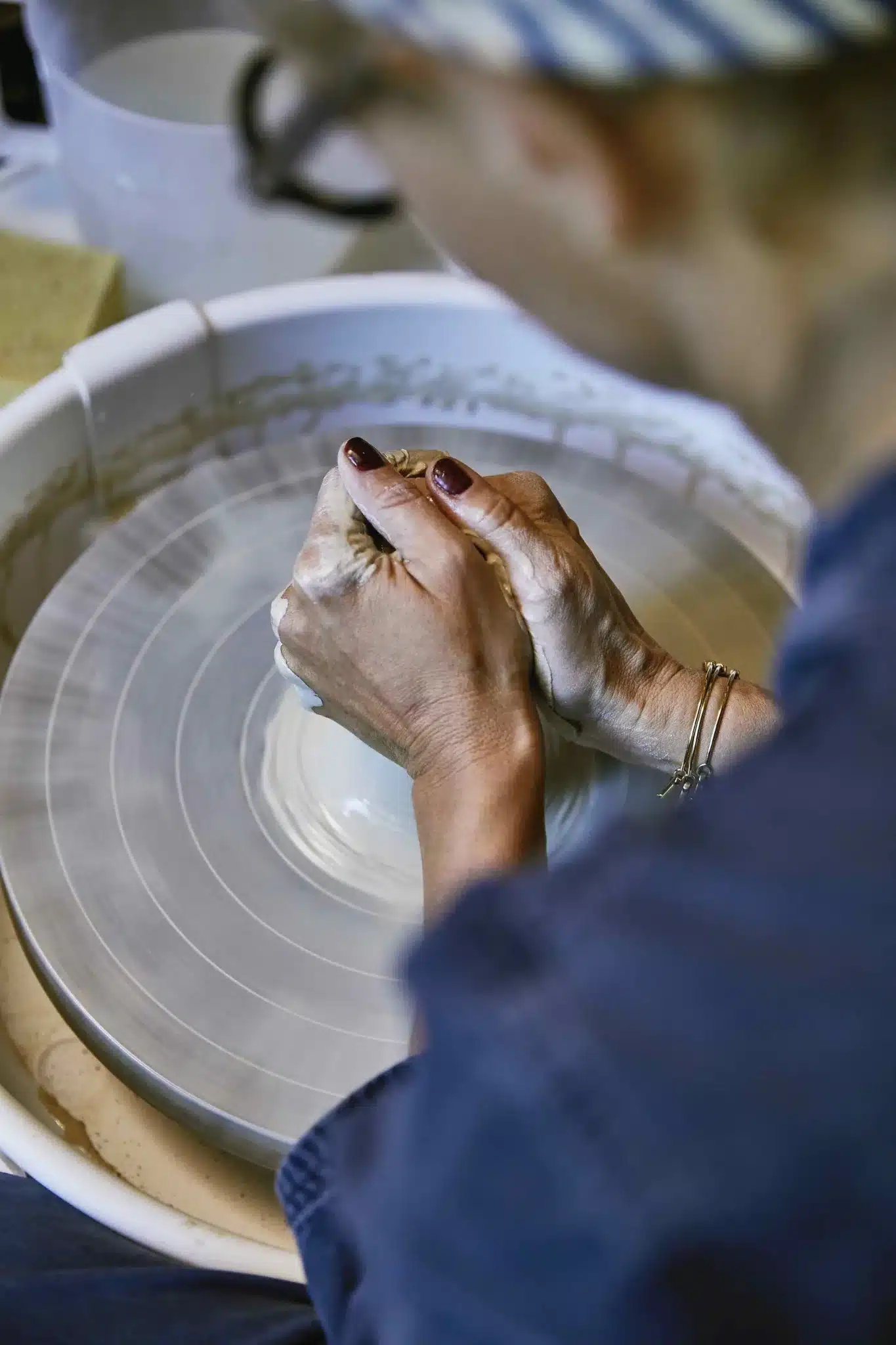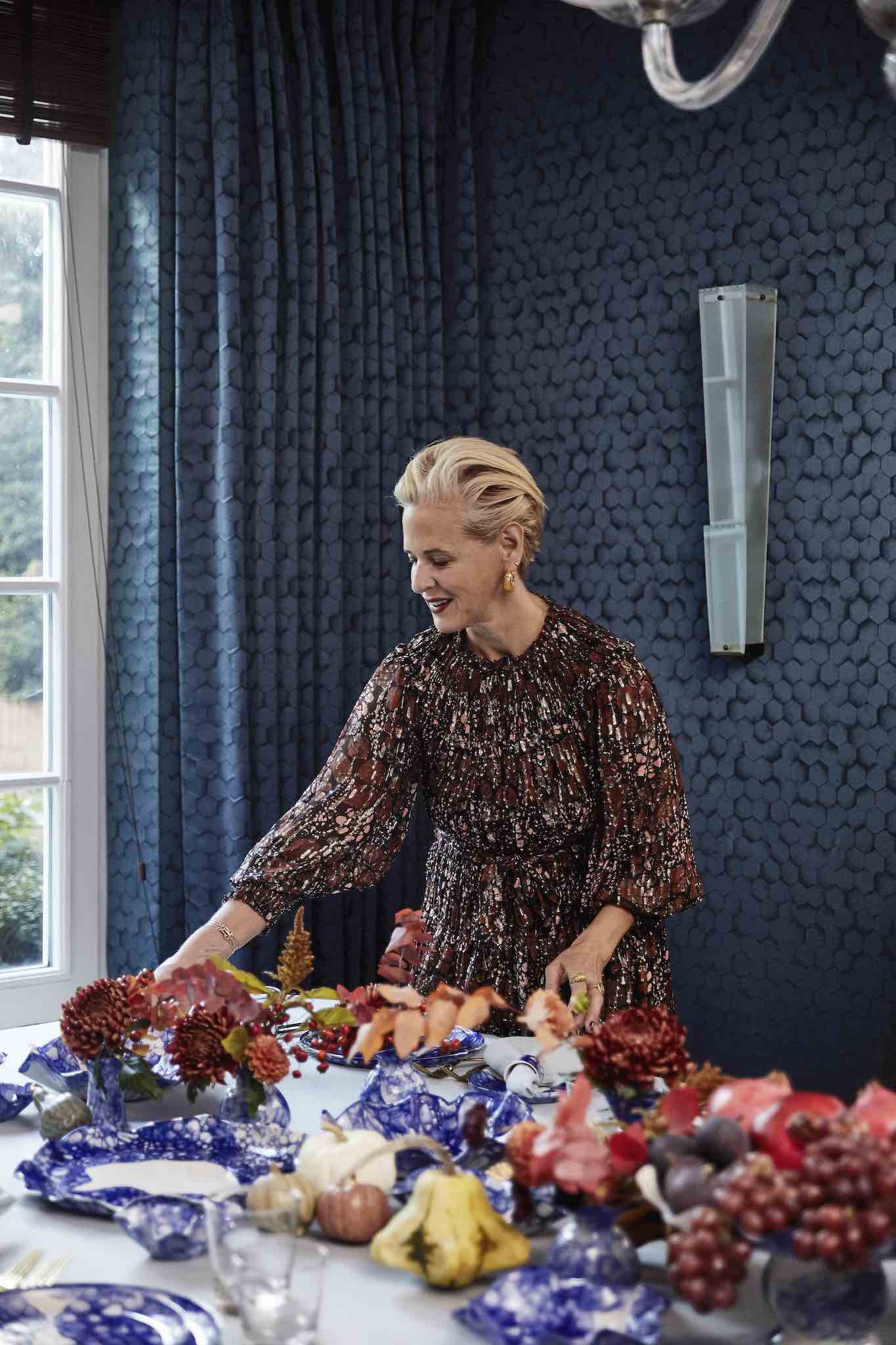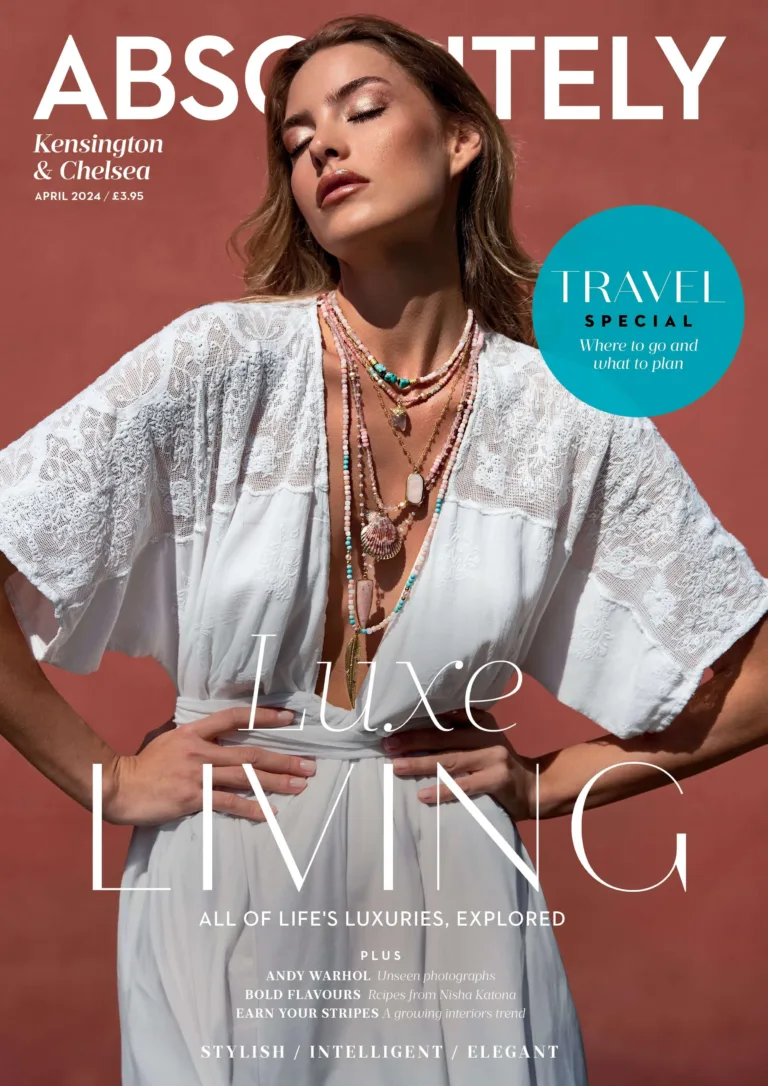Absolutely London’s Pendle Harte meets Deborah Brett to find out what made her change career for a new life in ceramics
Q So what inspired you to start again, careerwise?
A It was something that was percolating in my mind for about 10 years or so – but I think that when you’re really successful at something and also you do it really well, then leaving that comfort of something that feels quite safe can be tricky. My fashion life is wonderful and I’ve had the most brilliant career over 25 years and it’s very enticing. I kept on trying to leave and it kept on pulling me back in. I’ve still got my little toe dipped into the fashion pond – I don’t know whether I could leave it completely.
Q And why ceramics?
A One of the reasons was that I needed a new challenge. I went to St Martins and studied fashion design and then from there I went into journalism, so I wanted to learn again. When you’re older you know how to do that – and I wanted to really immerse myself in it before I even decided what I want to do with it. So I spent six years just learning everything I could while still having a job (and three kids). The transition’s been really slow but I haven’t wanted to rush it. Funnily enough, when I was at school there were things that I was really passionate about and one of them was my pottery class – I did it twice a week but it wasn’t really obvious to me that it could be a career. When we had our career talks it was all about being a lawyer or a teacher. Now, creativity and ingenuity and entrepreneurship are really lauded and we’re allowed to do things that are different. It used to be that people stayed in their careers, their lives, their cities – but now we’re allowed to move.


Q So how did you start?
A My mother-in-law bought me a course for my birthday. It was local and on a Monday. I got the bug immediately and remembered what I’d loved so much. I spent time really refining the technique, then I bought another course, and then another one that was maybe a bit more challenging, then an evening one, then a whole day and eventually I did a Level 3 BTEC at my local adult education centre. That took one day a week, plus a day in the studio and I still did three days in my fashion job. I did that for a year, then I graduated and ended up doing a collaboration with lovely boutique hotel Thyme, who got in touch wanting me to do a collection based on their linen. It snowballed from there.
Q How would you define your style?
A It’s hard to find out what you want to do, so I believe in trying everything. During all my courses we really did everything – throwing, slipcasting, slab-building, hand-building, mould-building, glazing.It’s a little bit reflective of what I’m like in my fashion career, because while most people are exclusively a writer or a stylist or a designer, when I was at The Times as deputy fashion editor, I wrote about fashion and also interiors but I also did the fashion shoots. When I moved to magazines I also did the beauty shoots and the celebrity covers, so I am someone who loves a lot of things and the same can be said for my ceramics. My favourite things are hand building and glazing. I love the chemistry behind making my own glazes and the reactive process. It is fascinating but also quite daunting and scary because of the unpredictability of it. I think if I only could do one thing I’d feel sad and a bit stifled. A lot of my pieces are a mixture of thrown and hand built and then I douse them in crazy glazes. It’s a bit of a mixture.
Q Your new collection of tableware uses a bubble technique. Tell us about that.
A Bubble technique is quite well known and looks relatively simple, but it has a layer of complexity underneath it. I spent a year figuring out how to make it work. It’s a process of what kind of clay and how you apply the glaze and when you fire it and how you fire it –there are lots of different elements. Then you throw on cobalt, which is really vivid. I branched out and tried green and pink, though pink took me two years because it just behaves differently. The thing that I love about bubble glaze is the hand application, the fact that it comes from me blowing the bubbles and my breath. I call them flow bowls because they move in the firing. Porcelain is very reactive to the heat: it remembers its shape and sometimes returns to it. So combine that fluidity with a glaze that you’re moving across the surface with your breath and I see it as reflective of the movement and unpredictability in life. So that’s the nub of my flow collection. I use a matt glaze in my personal pieces, with a gild edge, and in my tableware collection that’s a glossy transparent glaze so it’s food and dishwasher safe, and slightly more robust. I don’t use a lustre, so you can put it in the dishwasher; although they are decorative they are also really practical and that’s the difference between my bespoke and my personal pieces.


Q You’ve put it into production in Stoke on Trent.
A I feel really passionate about pieces being handmade. I think you can really feel the energy from them, the energy is transmitted. They’re made through slipcasting: I make the prototype and then it is hand-finished and hand-glazed. I taught three lovely women in Stoke how to do the bubble technique, so although the shapes are uniform and made from the same mould, each piece is individual because they’re finished by hand. I love supporting UK artisans and keeping that industry going is really important to me.
It was exciting and really wonderful to meet a factory that was very open to my techniques and my shapes and forms, which are not symmetrical and not easy to replicate. They have dips and fingerprints and my hand markings are kept into the pieces so that I’m part of the piece, which is really important to me.
Q Where do you work?
A I have my own garden studio – it’s a lockdown baby. I spent lockdown in my kitchen making bowls and my husband got tired of the mess. It’s heaven, I work there and do my bespoke pieces and glaze experimenting and all of what I call the fun stuff.
Q What are you working on now?
A I’m working on a couple of projects at the moment, one is a range of serveware for a private members club in mayfair, a special colour for their pantry, they have a gorgeous marble platter and they want lot of serving platters and cake stands; I’m making bespoke reactive glazes for them. I’m also developing new pieces for my own collection, so there’s a lot of talking to customers and working out what they want to have on their tables.
Read more interiors inspiration here.







